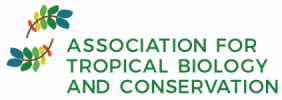Conservation ecology and reintroduction of the Critically Endangered Black-winged Myna in Indonesia
Project summary
The PhD, joint funded by Chester Zoo and MMU, focuses on conservation management for the three subspecies of Black-winged Myna Acridotheres melanopterus (likely the subject of a future taxonomic upgrade), as well as other bird species under extreme threat of extinction owing to excessive trapping for the cagebird trade. It aims to evaluate the prospects for the last remaining wild populations of all three taxa of the myna, to determine their management needs, and to identify best practices for the reintroduction of captive A. m. melanopterus.
Project aims and objectives
The PhD aims to evaluate the prospects for the last remaining wild populations of all three taxa of the myna, to determine their management needs, and to evaluate the optimal practices for the reintroduction of captive melanopterus.
To achieve these aims, we have the following objectives, which we anticipate will translate into thesis chapters.
- To conduct both field surveys and intensive desk-based surveys (making use of museum and citizen science data) across Java and Bali to locate as many ‘historical’ and remaining sites as possible for the three taxa of Black-winged Myna, plus other heavily traded species such as Java Sparrow Lonchura oryzivora, Javan White-eye Zosterops flavus and, if any can be found, Javan Pied Starling Gracupica jalla.
- To use data from 1. to build a time series of species distribution models for heavily traded species across Java and to identify commonalities in ecological and social conditions at these sites that promote species survival.
- To conduct fieldwork on remaining wild populations of melanopterus, tricolor and tertius, in order to generate basic information on habitat use, foraging requirements and breeding ecology, to help guide in situ conservation management of all three taxa and reintroduction efforts for melanopterus in order to boost their populations.
- To determine, through radio-tracking, the spatial and social behavior, and habitat use of a reintroduced population of melanopterus during their first two years of release.
- To examine the initial viability of the myna release through post-release monitoring of mortality and recruitment rates, and factors affecting any capture of individuals by trappers.
Specific requirements of the project
Applicants for this project should have relevant BSc/MSc qualifications in conservation biology, applied ecology or similar.
This project will require strong fieldwork and analytical skills including experience with a range of statistics, and GIS.
Experience of working abroad, especially in the tropics, is desirable, as is evidence of working in a diverse team, and under field conditions which may pose environmental and cultural challenges.
Either knowledge of, or a willingness and ability to learn a range of skills including speaking Bahasa Indonesia, radio-tracking, and various analytical techniques including species distribution modelling.
Student eligibility
Home/EU students
Supervisory Team
Informal enquiries can be made to:
Professor Stuart Marsden – 0161 247 6215 – s.marsden@mmu.ac.uk
Dr Nigel Collar – 01223 277 318 – nigel.collar@birdlife.org
Andrew Owen – 01244 389401 – a.owen@chesterzoo.org
Dr Huw Lloyd – 0161 247 1194 – h.lloyd@mmu.ac.uk
How to apply
Please quote the reference: SJM20162.
Applications should be completed using the Postgraduate Research Degree Application Form.
Application Form should be emailed to: pgradmissions@mmu.ac.uk.
PLEASE NOTE that Section 9 of the application should be used to write a personal statement outlining your suitability for the study, what you hope to achieve from the PhD and your research experience to date.
Closing date
21 November 2016 – Applications received after this date will not be considered.
Interviews
TBC



